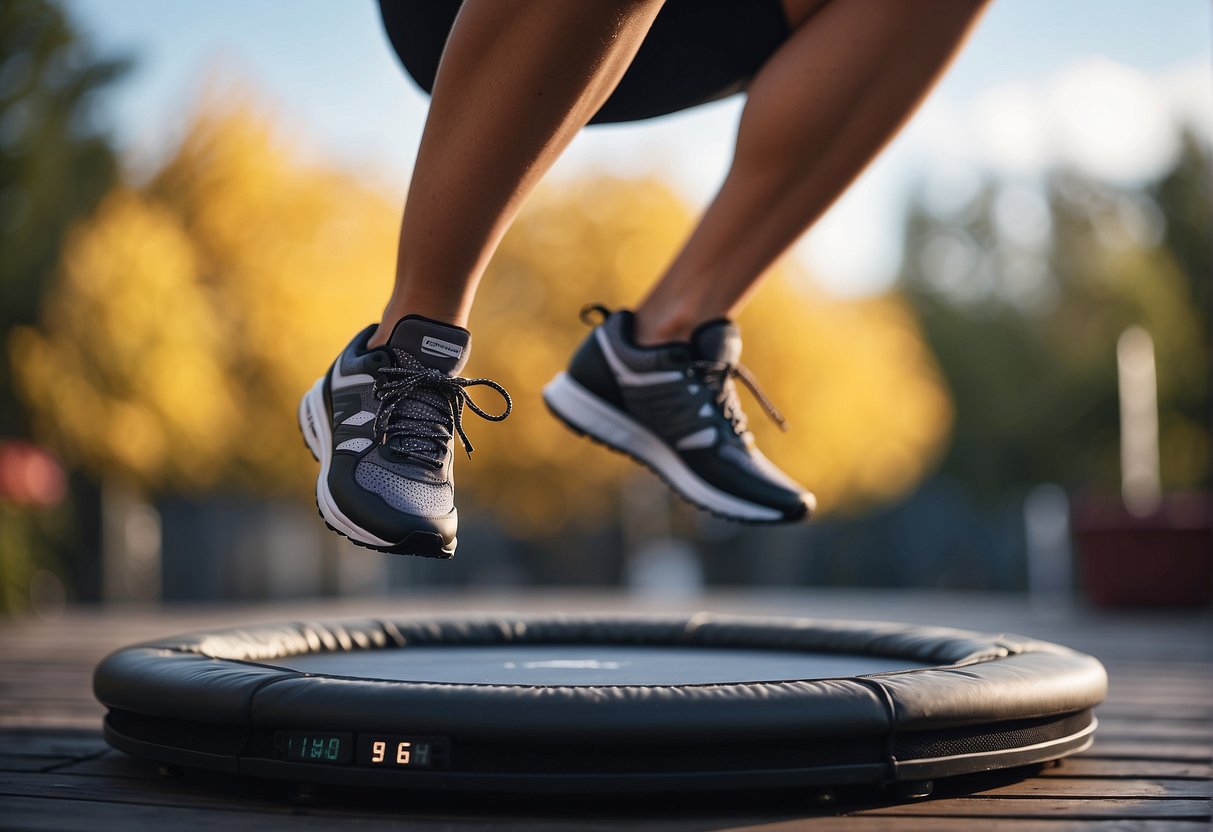📦 FREE Shipping
How Many Calories Does Rebounding Burn 2024: Surprising Insights

Rebounding has bounced into popularity as a fun way to workout, but what’s the payoff in calories? “How Many Calories Does Rebounding Burn? Surprising Insights” jumps into the numbers for this high-energy trampoline exercise.
How Many Calories Does Rebounding Burn?
Rebounding, a dynamic form of aerobic exercise performed on a mini-trampoline, could be your ticket to an exciting calorie-burning workout. As you bounce, your heart rate increases, amplifying the calorie burn.
Calories Torched
On average, a 30-minute rebounding session can burn between 210 to 300 calories for someone weighing around 150 pounds. The actual number ticks upward with intensity and personal weight:
- Moderate Pace: About 210 calories
- Vigorous Pace: Upwards of 300 calories
Intensity and Workout Types
- Low-Intensity Bounce: Suitable for beginners, less calorie burn.
- High-Intensity Intervals (HIIT): Alternating between intense bursts and recovery can maximize calorie burn.
Muscle Engagement
Rebounding engages multiple muscle groups across your body, transforming from a simple cardio workout to a composite cardio and strength training session.
Fitness Level Tailoring
No matter your fitness level, you can tailor rebounding to your needs. Beginners might start with more straightforward, less intense sessions while more advanced individuals can add in weights or increase the complexity and intensity.
Essential Factors Influencing Caloric Expenditure

Impact of Individual Attributes on Calorie Loss
Age: Young or old, your age factors into your metabolism. A younger person typically has a higher metabolic rate, leading to higher calorie burn.
Weight: If you weigh more, rejoice that you’re set to burn more calories. Each rebound requires your muscles to exert more, using up more energy.
Gender: Men often have less body fat and more muscle mass, which may result in them burning calories more efficiently than women during the same exercise.
Body Composition: High muscle mass means higher resting metabolic rates. More muscle equals more calories burned, even when you’re not moving.
Heart and Diet: A strong heart pumps blood more efficiently, influencing calorie expenditure. Plus, a balanced diet fuels workouts effectively, maximizing calorie burn.
Rebounding Technique and Session Dynamics
Intensity: Tap into the energy and up the ante! Intensify your session with high-speed jogging or running in place to surpass the calories burned by walking or light bouncing.
| Intensity | Est. Calories Burned (150 lb person) |
|---|---|
| Light Bounce | 210 calories/30 mins |
| Running in Place | 300 calories/30 mins |
Duration: Remember, the longer you rebound, the greater the calorie deficit you can potentially create, driving you towards your weight loss goals.
Balance and Lifestyle: Incorporating dynamic movements that challenge your balance strengthens the core and can spur additional calorie burn. A more active lifestyle contributes to better rebounding performance and calorie loss.
Holistic Health Advantages Beyond Calorie Burning

Physical and Mental Benefits of Rebounding
Balance and Coordination: Regular rebounding can improve your balance and coordination. As you navigate the unstable surface of the rebounder, your body learns to stabilize itself, engaging core muscles and honing reflexes.
- Joint Health: Rebounding’s low-impact nature protects your joints from the stress associated with high-impact exercises. This makes rebounding a joint-friendly workout option to help maintain joint health over time.
- Lymphatic System: Rebounding is particularly beneficial for the lymphatic system. The vertical movement helps circulate lymph fluids, which are pivotal in detoxifying the body and enhancing immune function.
- Stamina and Endurance: Rebounding can boost stamina and endurance. The activity is cardiovascular in nature, promoting heart health and increasing capacity for prolonged physical effort.
- Stress and Mental Health: Rebounding can be a stress reliever. It releases endorphins, the body’s natural mood lifters, combating anxiety and contributing to better mental health.
Strategic Approaches to Maximize Health Outcomes
Dietary Considerations: To maximize rebounding’s health benefits, pay attention to your diet. Incorporate a variety of vegetables and minimize sugar intake to complement rebounding’s toxin-cleansing effects.
- Structured Exercise Routines: Create a rebounding routine that combines intervals of varying intensity to challenge your body and mind. This strategic approach enhances cardiovascular fitness and improves mood and anxiety levels.
- Consistency and Variation: Consistently rebounding, coupled with introducing variations in your routines, ensures that your body doesn’t hit a plateau. This keeps both your muscles and your mind engaged for holistic health improvement.
FAQ:
How many calories burned 10 minutes rebounding?
In 10 minutes of rebounding, you can burn between 50 and 150 calories, depending on your weight and intensity.
How many calories do you burn rebounding for 30 minutes?
Rebounding for 30 minutes can burn approximately 150 to 450 calories, with the exact amount varying by individual effort and weight.
What is 10 minutes of rebounding equal to?
Ten minutes of rebounding is roughly equivalent to running a mile or a 10-minute jog, offering both cardio and muscular benefits.
Is rebounding good for weight loss?
Yes, rebounding is good for weight loss. It provides a high-intensity, low-impact cardiovascular workout that can burn calories efficiently.
If this article about the question: “How Many Calories Does Rebounding Burn” helped you, don’t forget to leave us a comment down below about what you think of the article.


